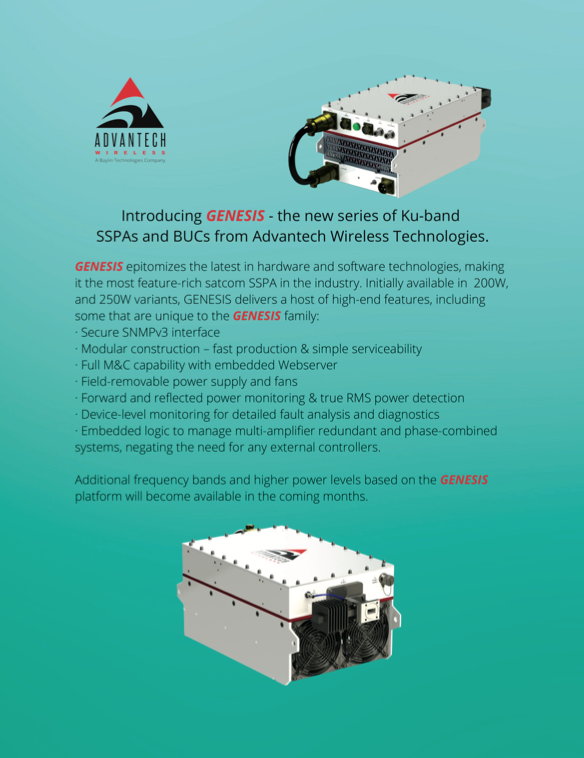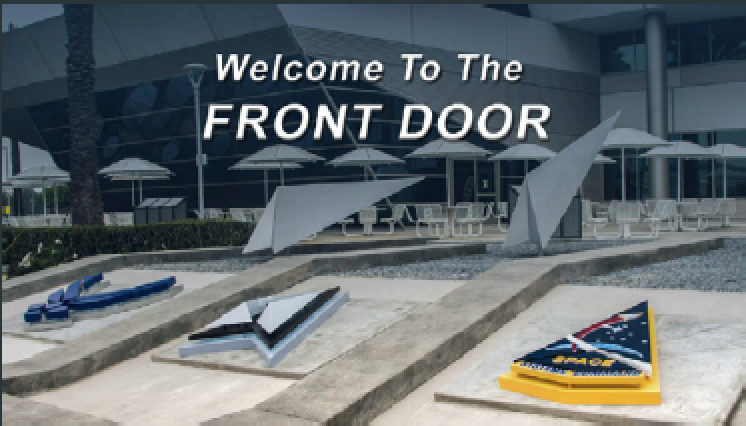At Space Systems Command (SSC), that mantra is dramatically reshaping how the command acquires the cutting-edge technology and capabilities necessary to keep the nation’s joint warfighters ahead of the threat. Adversaries know how the world increasingly relies on space power, and are seeking to surpass U.S. space dominance and disrupt equitable access to space and U.S. space assets.
Several of SSC’s leaders took time this month to explain how this new operating focus is changing how the U.S. Space Force Field Command is executing its mission.
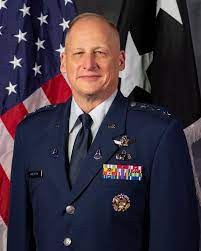
Lt. Gen. Michael A.
Guetlein
"At SSC we're shaping a more resilient space architecture, by reducing redundancies and costs while increasing the speed of program development cycles. Our flat command structure and expert workforce, allow us to create a new culture focused on countering the threat by guaranteeing the capabilities our joint warfighters and our Nation depend on will be there without fail during times of crisis or conflict. We are proud to partner with industry and are utilizing commercial innovation to outpace the growing threats.” -- Lt. Gen. Michael A. Guetlein, commander, SSC
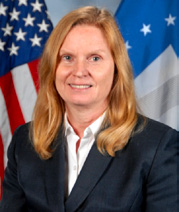
Dr. Claire Leon
“Our Space Systems Integration Office is chartered with integrate the current disparate systems developed by SSC program executive offices and mission partners into a resilient and integrated warfighting enterprise capable of deterring competitor aggression. How will we achieve this? Through delivery of an integrated investment strategy, enterprise roadmaps, and enterprise enablers – a united effort between Space Force’s three field commands, U.S. Space Command, mission partners, industry, and allies.” — Dr. Claire Leon, Director, Space Systems Integration Office

Col. Dennis
Birchenough
“We’re excited about our space-based environmental monitoring (SBEM) programs, including the Weather Support Follow-on Microwave satellite and Electro-Optical/Infrared Weather System prototype. The former enables the production of enhanced, warfighting weather- prediction and -analysis capabilities, while the latter trail-blazes the Space Force’s pivot to proliferated architecture for delivering cloud characterization and weather imagery. And we’re also collaborating with industry, other government agencies, and our Allied partners to provide SBEM data to the warfighter at operationally-relevant speeds to prevail against the threat.” — Colonel Dennis Birchenough, senior material leader, Environmental and Surveillance Delta, Space Sensing Directorate
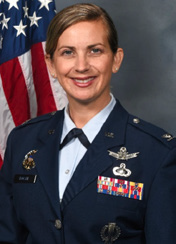
Col. Heather Bogstie
“The Space Sensing Directorate is exploiting capabilities from non-OPIR (Overhead Persistent Infrared) sources from within the space enterprise and exploring how to buy overhead imaging data from commercial sensor providers to tackle space-based ISR and weather warfighter needs. The directorate is building niche capabilities such as Next Generation GEO and Next Generation Polar for missile warning and pivoting toward the new MEO Missile Track systems aimed at detecting movements of adversaries emerging and highly maneuverable weapon systems.” — Colonel Heather B. Bogstie, senior materiel leader, Resilient Missile Warning, Tracking, and Defense Acquisition Delta, Space Sensing Directorate
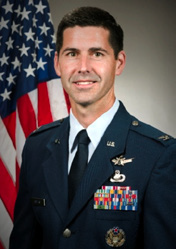
Col. Daniel Walter
“SSC’s Missile Warning Acquisition Delta exposes the constant stream of raw infrared wideband data to government labs, academia, and small business at our Tools, Applications, and Processes Lab, where we downlink terabytes of information daily to meet emerging threats. Capability must exist through all phases of conflict -- up to and including during a nuclear conflict. Those niche capabilities of nuclear-survivable sensors and communications systems for which there’s no commercial market, represent an area where we ‘build what we must.’ Future Missile Warning architectures that allow more simplified sensors, hosted in larger constellations provide resiliency in depth and create a ripe environment for high volume production that drives industry competition - all which maximize our return on investment.” — Colonel Daniel Walter, senior materiel leader, Strategic Warning Acquisition Delta, Space Sensing Directorate.

Cordell DeLaPena
“The MILSATCOM and Position, Navigation, and Timing portfolio is delivering on today’s programs to provide increased anti-jam performance across multiple domains. At the same time, we are moving out on prototyping diverse phenomenologies and building acquisition strategies to leverage commercial capacity to enable the next generation of layered resiliency for communications, navigation, and timing.” — Cordell DeLaPena, program executive officer, Military Communications and Positioning, Navigation, and Timing (PNT)
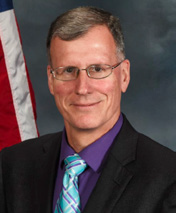
Dr. Walter
Lauderdale
“The National Security Space Launch (NSSL) program was one of the first modern SSC programs to rely on industry to develop commercial capabilities, rather than to require build to a specification. As a result, we’ve benefited from the focus and innovation of our industry partners. As we look forward, we are expanding those partnerships to meet the growing demand of our spacecraft customers and their mission areas. New space mission architectures that incorporate resilience and maneuverability must have rapid, responsive launch services to address growing threats in the space regime. NSSL is tapping the energy and creativity of the launch industry to create resiliency to meet national requirements where and when needed.” — Dr. Walt Lauderdale, Chief, Falcon Systems & Operations, Launch Execution Acquisition Delta, Assured Access to Space

Lt. Col. Jonathan Shea
“Following Lt. Gen. Guetlein’s direction to utilize commercial innovation, the DoD Space Test Program leveraged venture-class launch vehicle providers such as Rocket Lab, Virgin Orbit, and Astra for our Rapid Agile Launch Initiative. Going forward, we want to buy commercial-off-the-shelf (COTS) space vehicles utilizing a new contract. This will provide an innovative way to attach multiple experiments to a variety of vehicles at a rapid pace.” Lieutenant Colonel Jonathan Shea, materiel leader and director, DoD Space Test Program
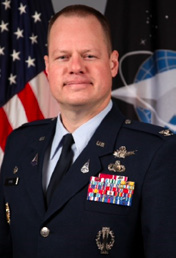
Col. Joseph Roth
“SSC is one of many working to get capabilities into warfighter hands - it takes teamwork and collaboration with our sister USSF organizations and other mission partners to rapidly experiment and prototype new space and C2 capabilities to ensure we continue to out-innovate the threat and maximize combat power by 2026 and beyond.” — Col. Joseph Roth, Director, Innovation and Prototyping Directorate and commander, Space Systems Center, Detachment 1, Kirtland Air Force Base, New Mexico.
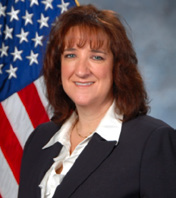
Deanna Ryals
“We are building an integrated and resilient constellation of partnerships driven by innovation and allied by design. The pacing challenge from competitors on the world stage is real and, as the clock ticks, we are capitalizing on alliances to cover capability gaps and add resilience to our architecture. Our mission is driven by the need to partner with like-minded nations who desire the same opportunities and freedoms as the U.S. We’re focused on updating policies to allow greater freedom of action to obtain capabilities at the speed of industry in the U.S. and around the globe. By harnessing the tremendous intellectual capital and resources from the global space marketplace, we will outpace our competitors and maintain the advantage needed to deter conflict.” — Deanna Ryals, Director, International Affairs

Brian Gamble
“Front Door identifies non-traditional companies that are getting after critical pieces of a challenge or problem and determine if they’re doing it in a way that could fill a current or emerging need. Artificial intelligence and machine learning, software-defined network solutions, and that next level of computing power is what’s going to make the U.S. Space Force more effective and efficient. We’re discovering and leveraging potentially game-changing commercial capabilities; focusing on where we can buy versus build.”— Brian Gamble, Front Door executive consultant

Minh Jones
“When people come to us at the Front Door, all they see is big ‘G’ government — they may not realize that each organization has unique lanes and each entity has its own scope. As part of the DoD, SSC has a mandate to acquire systems that will support a ‘protect and defend’ mission. But there are many other organizations like NASA and NRO that have other missions that need space technology. If someone approaches us with technology that doesn’t fit our mission needs, the Front Door will do its best to connect them to organizations that might.” — Minh Jones, Front Door executive consultant
Visit Space Systems Command, Space Operations Command and Space Training & Readiness Command together at the Space Symposium, Booth #110-114.
Space Systems Command is the U.S. Space Force Field Command responsible for acquiring and delivering resilient war fighting capabilities to protect our nation’s strategic advantage in and from space. The Command manages an $11 billion space acquisition budget for the Department of Defense and works in partnership with joint forces, industry, government agencies, academic and allied organizations to accelerate innovation and outpace emerging threats. Our actions today are making the world a better space for tomorrow.
Contact Space Systems Command at SSC@spaceforce.mil
and follow on LinkedIn


